How to Grow Lacecap Hydrangeas: Easy Tips for First-Time Gardeners
- March 6, 2024
- 0 comment
Lacecap Hydrangeas, scientifically known as Hydrangea macrophylla var. normalis, are cherished for their elegant and distinctive flowers. Unlike their more common counterpart, the mophead hydrangea, lacecaps exhibit flat flower heads with a center core of subdued, fertile flowers surrounded by outer rings of showy, sterile flowers. This guide aims to provide you with comprehensive steps to successfully grow and care for Lacecap Hydrangeas in your garden.
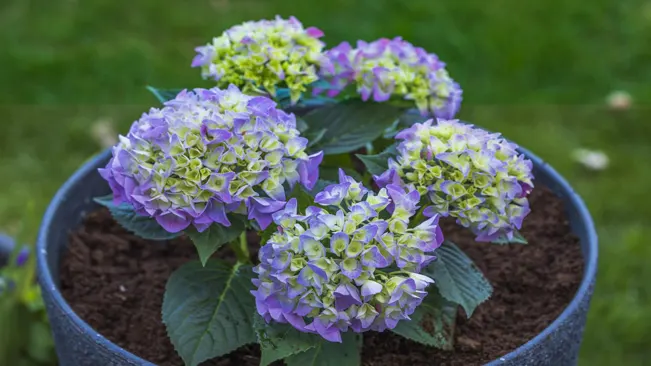
List on How To Grow Lacecap Hydrangeas
- Selecting a Planting Site
- Planting Procedure
- Watering and Feeding
- Pruning and Maintenance
- Pest and Disease Management
- Changing Flower Color
Selecting a Planting Site
Light Requirements
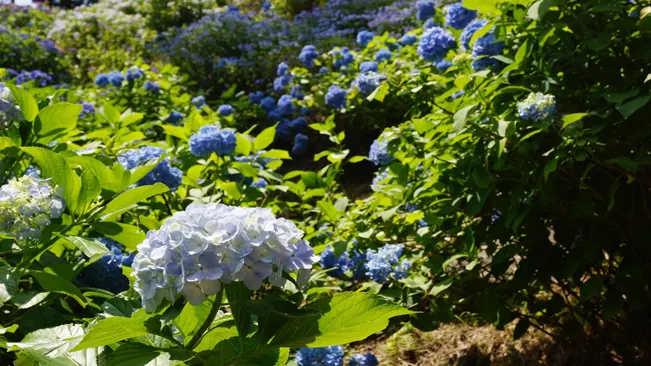
- Understanding Partial Shade: Lacecap Hydrangeas excel in locations that offer a balance of sunlight and shade. The term ‘partial shade’ means that these plants need some exposure to sunlight, but not all day. This balance is crucial as both extremes (too much sun or too much shade) can be detrimental.
- Ideal Daily Sun Exposure: The best scenario is a spot where the plants receive morning sunlight and are shaded in the afternoon. Morning sun is gentler and less intense, which energizes the plants without the risk of leaf burn that can occur in the harsh afternoon sun.
- Effects of Sunlight on Growth and Bloom: Adequate sunlight is essential for robust growth and abundant flowering. If the plants receive too little light, they may have lush green growth but sparse blooming. On the other hand, too much direct sunlight can stress the plants, leading to scorched leaves and reduced vitality.
Soil Conditions
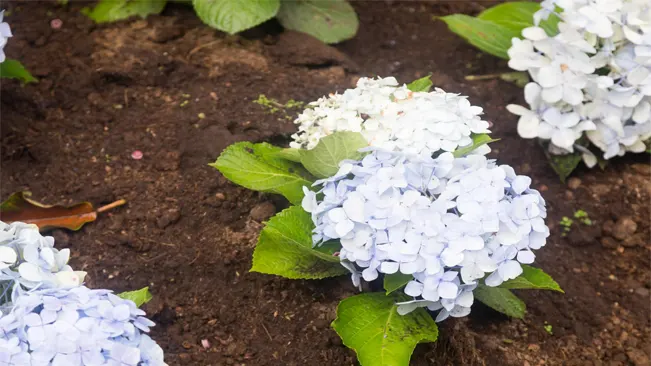
- Importance of Well-Drained, Moist Soil: Lacecap Hydrangeas thrive in soil that retains moisture without becoming waterlogged. Good drainage ensures that roots get enough water but are not sitting in excessive moisture, which can lead to root rot.
- Soil Rich in Organic Matter: These plants love soil enriched with organic matter. This can include compost, decayed leaves, or well-rotted manure. Organic matter improves soil structure, nutrient content, and moisture retention.
- pH Levels and Hydrangea Color: The pH level of the soil can influence the color of hydrangea flowers, particularly in varieties susceptible to color change. Slightly acidic to neutral soil pH levels are ideal. For blue flowers, aim for a more acidic soil, whereas pink flowers are encouraged by alkaline conditions. A soil test can provide valuable information about pH levels and nutrient content, guiding amendments for optimal plant health.
Spacing
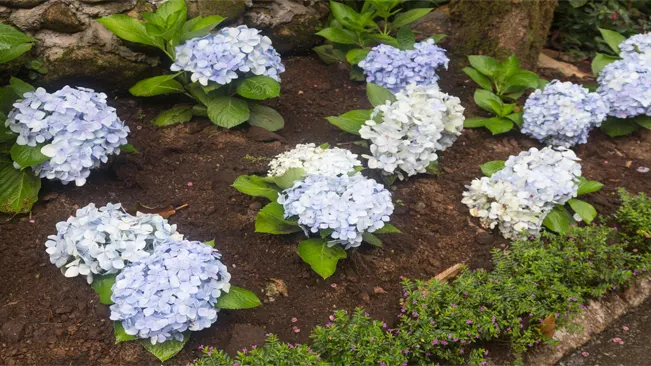
- Importance of Adequate Spacing: When planting Lacecap Hydrangeas, leave about 3 to 4 feet of space between each plant. This spacing is crucial for several reasons, including air circulation, sun exposure, and nutrient availability.
- Air Circulation to Prevent Diseases: Good air circulation is essential for preventing fungal diseases. When plants are too close, moisture can accumulate on the leaves, creating an environment conducive to fungi.
- Allowance for Growth and Spread: Hydrangeas can grow to substantial sizes. Adequate spacing allows each plant to develop fully and healthily, with enough room for its root system and foliage. Crowded plants may compete for resources, leading to weaker growth and fewer blooms.
Planting Procedure
Planting Time
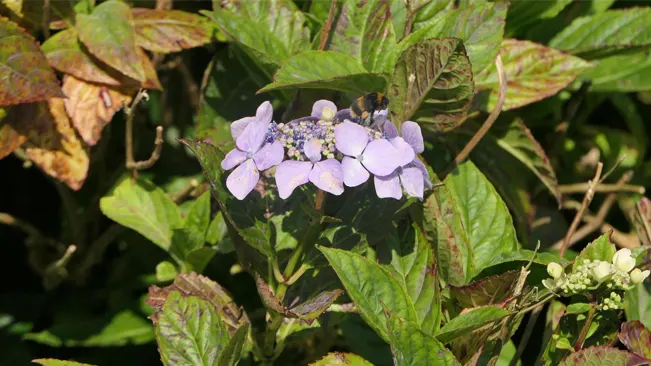
- Why Spring or Fall?: Planting in spring or fall takes advantage of milder temperatures, which are less stressful for new plants. In spring, the soil is warming up, encouraging root growth. In fall, the cooler temperatures help plants establish roots without the stress of high summer heat. Avoid planting in summer when high temperatures can stress plants, and in winter when the ground is often too hard and cold for roots to establish.
Planting Method
- Preparing the Hole: The size of the planting hole is crucial for the healthy establishment of the plant. It should be as deep as the root ball of your hydrangea but 2-3 times wider. This size allows the roots to spread easily in the surrounding soil, facilitating better establishment and growth.
- Setting the Plant: Carefully remove the hydrangea from its container, taking care not to damage the root ball. Position the plant in the center of the hole, ensuring it sits at the same depth as it was in its container. This is important because planting too deep can cause the stem to rot, while planting too shallow may expose the roots and stress the plant.
- Backfilling the Hole: After placing the plant in the hole, backfill it with the soil you dug out. You can improve the soil by mixing in compost or well-rotted manure, which provides nutrients and improves soil structure. Avoid packing the soil too tightly as this can hinder water penetration and root growth.
- Watering: Once you’ve backfilled the hole, water the plant thoroughly. This initial watering helps settle the soil around the roots and eliminates air pockets, ensuring good contact between the roots and the soil. Watering also provides the necessary moisture for the roots to begin growing into the surrounding soil.
Watering and Feeding
Watering
Proper watering is key to the health of Lacecap Hydrangeas. These plants are notably thirsty, especially during their establishment period in the first year after planting.

- Frequency: The frequency of watering depends largely on weather conditions and soil type. In general, hydrangeas need more frequent watering in hot, dry weather. In cooler, moist conditions, you can water less frequently.
- Amount: Aim to keep the soil consistently moist. This often means providing about an inch of water per week, whether through rainfall or manual watering. However, adjust based on soil conditions and weather – sandy soils dry out faster and may require more water, while clay soils hold moisture longer and may need less.
- Method: When watering, it’s best to water deeply and thoroughly, allowing moisture to reach the deeper roots. Avoid shallow watering as it promotes shallow root growth, making the plant more vulnerable to drought.
- Tips for Success: Avoid overhead watering to prevent leaf diseases. Watering at the base of the plant is most effective. Also, a layer of organic mulch can help retain soil moisture and reduce watering needs.
Fertilizing
Fertilization helps Lacecap Hydrangeas grow strong and bloom well, but it should be done carefully to avoid over-fertilizing.

- Type of Fertilizer: A balanced, slow-release fertilizer is ideal for Lacecap Hydrangeas. Look for a fertilizer with an NPK (nitrogen-phosphorus-potassium) ratio like 10-10-10 or 15-15-15.
- Timing: The best time to fertilize is in early spring as the plants are coming out of dormancy. This gives them the nutrients they need to support growth and flowering throughout the season.
- Application: Follow the instructions on the fertilizer package for the appropriate amount. It’s crucial to apply it evenly around the base of the plant, avoiding direct contact with the stems and leaves.
- Over-Fertilization: Signs of over-fertilization include sparse flowering, soft, lush green growth, and possible leaf burn. If you suspect over-fertilization, reduce the amount of fertilizer and increase watering slightly to help flush out excess nutrients.
- Organic Options: If you prefer organic gardening, well-composted manure or compost can be an excellent alternative to chemical fertilizers. They provide a slower, more natural nutrient release.
Pruning and Maintenance
Pruning Lacecap Hydrangeas
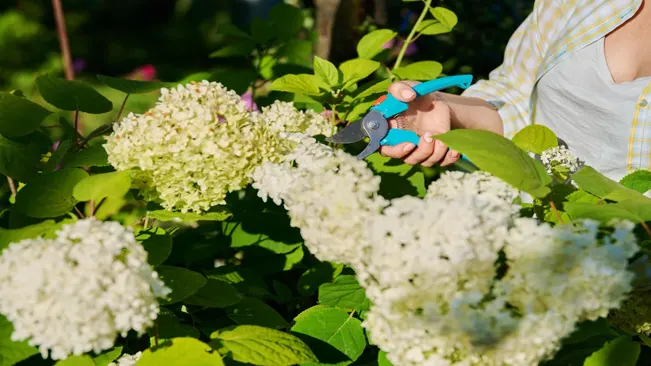
- Understanding Old Wood: Lacecap Hydrangeas bloom on old wood, which means they set their flower buds during the late summer and fall on stems that have been present for at least a year. This is crucial to remember because if you prune at the wrong time, you might inadvertently remove the buds that would have produced the next season’s flowers.
- Timing: The best time to prune Lacecap Hydrangeas is in late winter or early spring before new growth starts but after the worst of the winter cold has passed. This timing minimizes the risk of damaging new buds that will produce flowers.
- Method: Start by removing any dead or dying branches. Dead wood will be brittle, have no leaves, and may appear darker. Next, focus on thinning out the plant to improve air circulation. This involves removing some of the older stems, especially if the center of the plant is getting crowded.
- Shape and Size: While pruning, it’s also a good time to shape the plant if it has grown too large or unruly. However, keep in mind the bloom-on-old-wood rule and try to maintain a natural shape.
- How Much to Prune: Generally, it’s safe to remove about one-third of the total growth. Over-pruning can stress the plant and reduce flowering.
Deadheading Lacecap Hydrangeas
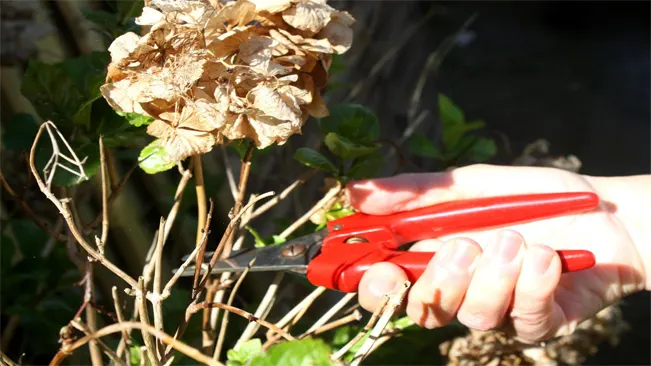
- What is Deadheading?: Deadheading is the process of removing spent flowers. In many plants, this is done to encourage more blooms, but with Lacecap Hydrangeas, it’s mainly for aesthetic reasons as it won’t necessarily promote new blooms.
- When to Deadhead: You can deadhead any time after the blooms fade. Some gardeners prefer to leave the faded blooms on the plant over winter, as they can provide visual interest and a bit of frost protection.
- How to Deadhead: To deadhead, simply cut the stem of the spent bloom back to the first pair of healthy leaves. Be gentle, as neighboring buds could be next season’s flowers.
Pest and Disease Management
Pest Management
- Aphids: These small, sap-sucking insects can be found on the undersides of leaves and on new growth. They can cause leaf distortion and promote sooty mold growth. Control methods include spraying with water to dislodge them, using insecticidal soaps, or introducing natural predators like ladybugs. Neem oil is also effective as it acts as an anti-feedant and growth regulator for aphids.
- Spider Mites: Tiny and often hard to see with the naked eye, spider mites can cause significant damage by sucking plant juices. Signs of their presence include fine webbing and speckled, discolored leaves. Increasing humidity can deter them, and horticultural oils or miticides can be used for control. Regular monitoring and early intervention are key to managing spider mite infestations.
- Slugs: These pests are particularly attracted to the moist, shady conditions that hydrangeas love. They chew large, irregular holes in leaves, mainly at night. Slug control can be achieved through hand-picking at night, setting up beer traps, using slug baits (prefer eco-friendly options), or laying barriers like crushed eggshells or diatomaceous earth around the plants.
Disease Prevention
- Powdery Mildew: This fungal disease appears as a white powdery coating on leaves. It thrives in humid conditions with poor air circulation. To prevent it, ensure plants are spaced adequately, and prune them to improve air flow. Avoid overhead watering to keep the foliage dry. If powdery mildew appears, treat it with a fungicide or a homemade solution of baking soda, water, and a mild detergent.
- Leaf Spot: Caused by various fungi, leaf spot diseases create spots on the leaves which can lead to premature leaf drop. Good sanitation practices, like cleaning up fallen debris and avoiding overhead watering, can prevent leaf spot diseases. In severe cases, a fungicide may be necessary.
General Tips for Disease and Pest Management
- Regular Inspection: Regularly inspect your hydrangeas for signs of pests and diseases. Early detection makes management much more straightforward.
- Cultural Practices: Healthy plants are less susceptible to problems. Proper watering, fertilizing, and pruning go a long way in preventing issues.
- Organic Treatments: Whenever possible, opt for organic treatments. Chemicals can be harsh on the environment and beneficial insects.
- Integrated Pest Management (IPM): This approach involves using a combination of cultural, physical, biological, and chemical methods to control pests and diseases in a sustainable way.
Changing Flower Color
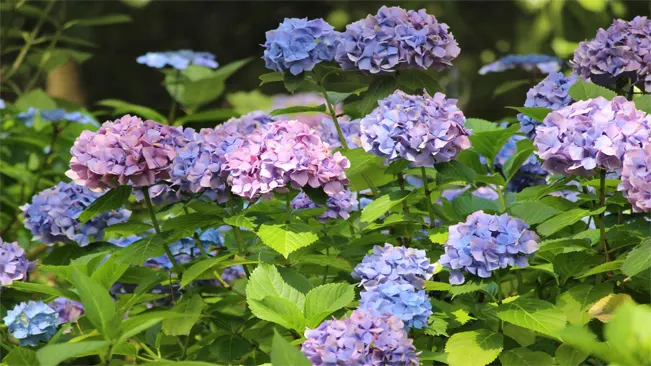
- Altering pH: The color of lacecap hydrangea flowers can change based on the soil pH. Acidic soil (lower pH) produces blue flowers, while alkaline soil (higher pH) results in pink flowers. You can alter the soil pH using sulfur to lower it or lime to raise it, but do so cautiously and over time.
Conclusion
Growing lacecap hydrangeas is a rewarding endeavor that adds elegance and charm to any garden. With the right care, these beautiful plants can thrive and become a stunning feature in your landscape. Remember that patience and consistency in care are key to enjoying the full beauty of lacecap hydrangeas.
FAQs (Frequently Asked Questions)
- What is the best location to plant Lacecap Hydrangeas?
Lacecap Hydrangeas prefer a location with morning sun and afternoon shade, ideally in well-drained, moist soil rich in organic matter. Partial shade is ideal to prevent leaf scorch and promote robust flowering. - How often should I water Lacecap Hydrangeas?
Regular watering is essential, especially during dry spells. The goal is to keep the soil consistently moist but not waterlogged. Watering frequency depends on climate and soil conditions but is generally more frequent during hot, dry periods. - Can Lacecap Hydrangeas grow in full sun?
They can tolerate full sun in cooler climates, but in warmer regions, they need protection from the harsh afternoon sun. Prolonged exposure to intense sunlight can damage the leaves and blooms. - When is the best time to plant Lacecap Hydrangeas?
The best times are in the spring or fall. Avoid planting during the peak of summer heat or winter cold to minimize stress on the plant. - Do Lacecap Hydrangeas need pruning?
Yes, they benefit from annual pruning to remove dead wood and thin out crowded branches. Prune in late winter or early spring, as they bloom on old wood. Over-pruning can reduce flowering. - How do I change the color of Lacecap Hydrangea flowers?
The flower color can be influenced by the soil pH: acidic soil (lower pH) encourages blue flowers, while alkaline soil (higher pH) tends to produce pink flowers. You can alter the soil pH using sulfur to lower it or lime to raise it. - What kind of fertilizer should I use for Lacecap Hydrangeas?
Use a balanced, slow-release fertilizer in the spring. Avoid over-fertilizing as it can lead to lush foliage at the expense of blooms. - How much space do Lacecap Hydrangeas need when planting?
Plant them 3 to 4 feet apart from other plants to ensure adequate space for growth and air circulation, which is important for disease prevention. - Can Lacecap Hydrangeas grow in pots?
Yes, they can grow in pots if they are large enough to accommodate their root system. Ensure the pot has good drainage and use a high-quality potting mix. - How do I protect Lacecap Hydrangeas in winter?
In colder climates, provide a layer of mulch to protect the roots from freezing temperatures. If you’re in a region with severe winters, consider covering the plants with burlap or similar material for added protection.

Kristine Moore
Forestry AuthorI'm Kristine Moore, a seasoned garden landscaping professional with over 30 years of experience. My extensive career has been dedicated to transforming outdoor spaces into stunning, sustainable landscapes. With a deep understanding of horticulture, design principles, and environmental stewardship, I have become a respected figure in the field, known for creating harmonious, visually appealing, and eco-friendly gardens. My commitment to excellence and continuous learning in landscaping trends and techniques has solidified my reputation as an expert in garden design and implementation.













Leave your comment